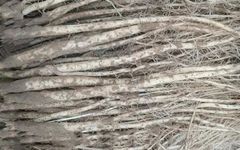


The seed propagation of Dang Shen (Codonopsis pilosula) must use fresh seeds from the current year, as the germination rate of seeds from the previous year is extremely low. The pre-sowing seed treatment method is as follows:
Remove impurities and empty seeds from the selected Dang Shen seeds; if irrigation is available, direct sowing can be done. If irrigation is not available, pre-soaking the seeds to promote germination can be done flexibly according to soil moisture conditions. The method is: soak the seeds in warm water at 40-50°C while stirring until the water temperature feels warm but not hot to the touch. Soak for an additional 5 minutes, then place the seeds in a gauze bag and keep them at a temperature of 15-20°C, rinsing with clean water every 3-4 hours. The seeds will be ready to sow in 5-6 days when they start to split.

Dang Shen is a deep-rooted plant. During the seedling stage, it is sensitive to strong sunlight and requires shade; mature plants prefer sunlight but are sensitive to waterlogging. They are cold-resistant and can survive winter in the field. They grow best near water sources in loose, fertile, well-drained sandy loam or humus soil, while low-lying saline-alkali land is not suitable for planting. After selecting the site, apply 2000-2500 kg of well-rotted organic fertilizer and 75 kg of compound fertilizer as base fertilizer per mu, plow to a depth of about 30 cm, then rake and level the soil, create beds, and ensure good drainage ditches are opened before sowing.
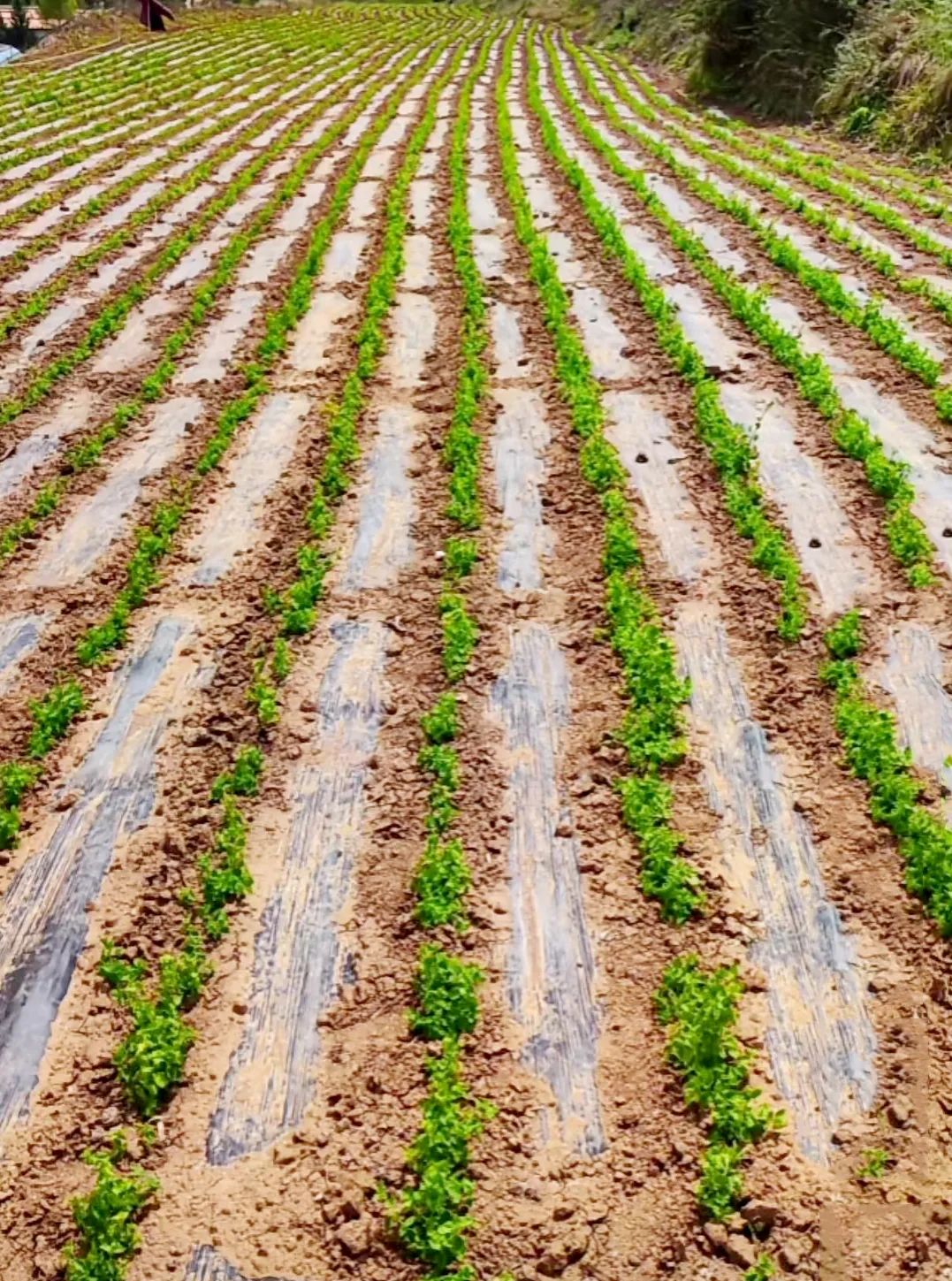

Spring sowing should be done in March-April, preferably early. Summer sowing should be done in June-July, with special attention to shading and drought prevention during the high temperatures of summer to prevent seedling death from sun exposure or drought. Autumn sowing should be done in October-November before the ground freezes; seeds will not germinate until the following year around the Qingming Festival. Autumn sowing should be done later rather than earlier, as early sowing may lead to seedlings that cannot survive the winter. Most Dang Shen sowing is done in spring around April, as the temperature is relatively stable and rainfall is less, which is beneficial for seedling growth.

First, open shallow furrows on the prepared beds with a row spacing of 25-30 cm and a sowing width of about 10 cm, to a depth of 0.5 cm. Then mix the seeds with fine soil and evenly sprinkle them in the furrows, lightly cover with fine soil, and press down slightly to ensure contact between the surface soil and the seeds. The seeds should be sown shallowly, with just a thin layer of soil covering them; the seeding rate is 1.5-2 kg per mu. Dang Shen seeds require moisture for germination, and seedlings prefer shade. In production, cover with straw or interplant with tall crops for shading, or sow some vegetable seeds at the same time, which can provide shade as they grow, and gradually remove them after the seedlings emerge. When the seedlings reach a height of 12-15 cm, remove the vegetable seedlings.
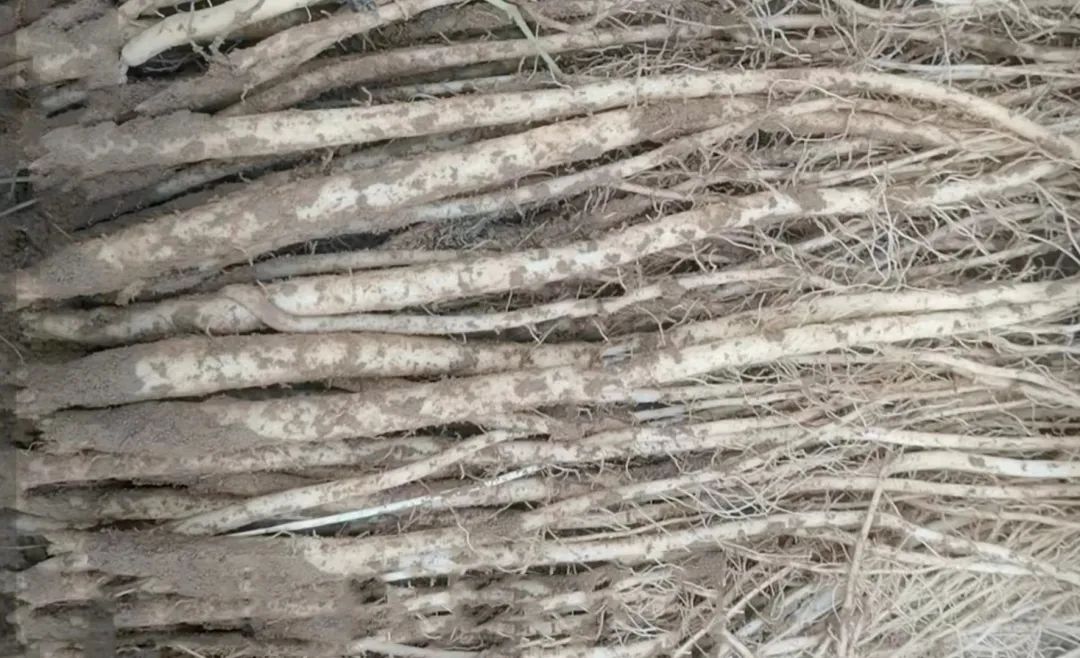
 Seedling Field Management
Seedling Field Management
The seedlings of Dang Shen are weak during the early growth stage and are sensitive to drought, flooding, and sunlight, preferring cool shade. The success of Dang Shen cultivation depends on proper management during the seedling stage; if not managed well, even if they have emerged, they may gradually die. Key management aspects during the seedling stage include:
(1) Watering and Drainage
During the seedling stage, water according to local soil conditions, avoiding heavy irrigation to prevent uprooting the seedlings. Keep the bed surface moist during the emergence and seedling stages to facilitate emergence; after the seedlings grow, watering can be reduced and fertilization is not necessary. Excessive moisture can lead to excessive vegetative growth, while moderate drought is beneficial for root elongation. During the rainy season, pay special attention to drainage to prevent root rot and seedling death.
(2) Weeding and Thinning
Regularly remove weeds in the seedling field to prevent weed overgrowth. When seedlings reach a height of 5-7 cm, thin them appropriately to maintain a spacing of 1-3 cm, removing overly dense weak seedlings in stages.
Field Management of Dang Shen
(1) Cultivation and Weeding
Removing weeds is one of the main measures to ensure increased yield of Dang Shen. Therefore, before closing the rows, regularly remove weeds and loosen the soil, and pay attention to hilling to prevent the tubers from being exposed. Soil loosening should be shallow to avoid damaging the roots; after closing the rows, do not loosen the soil again. Generally, 2-3 weeding sessions are done in the first year after planting, and weeding can be done as needed in early spring after emergence each year.
(2) Irrigation and Drainage
Before emergence, keep the bed surface moist. After the seedlings emerge, water should be allowed to flow slowly into the beds. Once the seedlings reach a height of over 15 cm, watering is generally not needed, but care should be taken to keep the surface loose and the soil moist below. During the rainy season, ensure proper drainage to prevent root rot.
(3) Fertilization
After successful transplanting, in early May when the seedlings are about 30 cm tall, if conditions allow, apply well-rotted organic fertilizer once, about 1000-1500 kg per mu, and then hill the soil; or combine with the first weeding to loosen the soil, applying 10-15 kg of nitrogen fertilizer per mu; and with the second soil loosening, apply 25 kg of superphosphate per mu, placing the fertilizer near the roots. In winter, apply about 1500 kg of well-rotted organic fertilizer per mu to promote strong growth of Dang Shen the following year.
(4) Support Structures
When the seedlings reach about 30 cm in height, provide support for the stems to climb, which facilitates ventilation and light penetration, increases photosynthetic capacity, promotes strong growth, and reduces pest damage. Poor ventilation and light can lead to seedling rot during the rainy season and affect the yield of roots and seeds. Supports can be made from local materials, such as inserting bamboo poles or branches between rows, tying them together in an “A” shape or triangular frame.
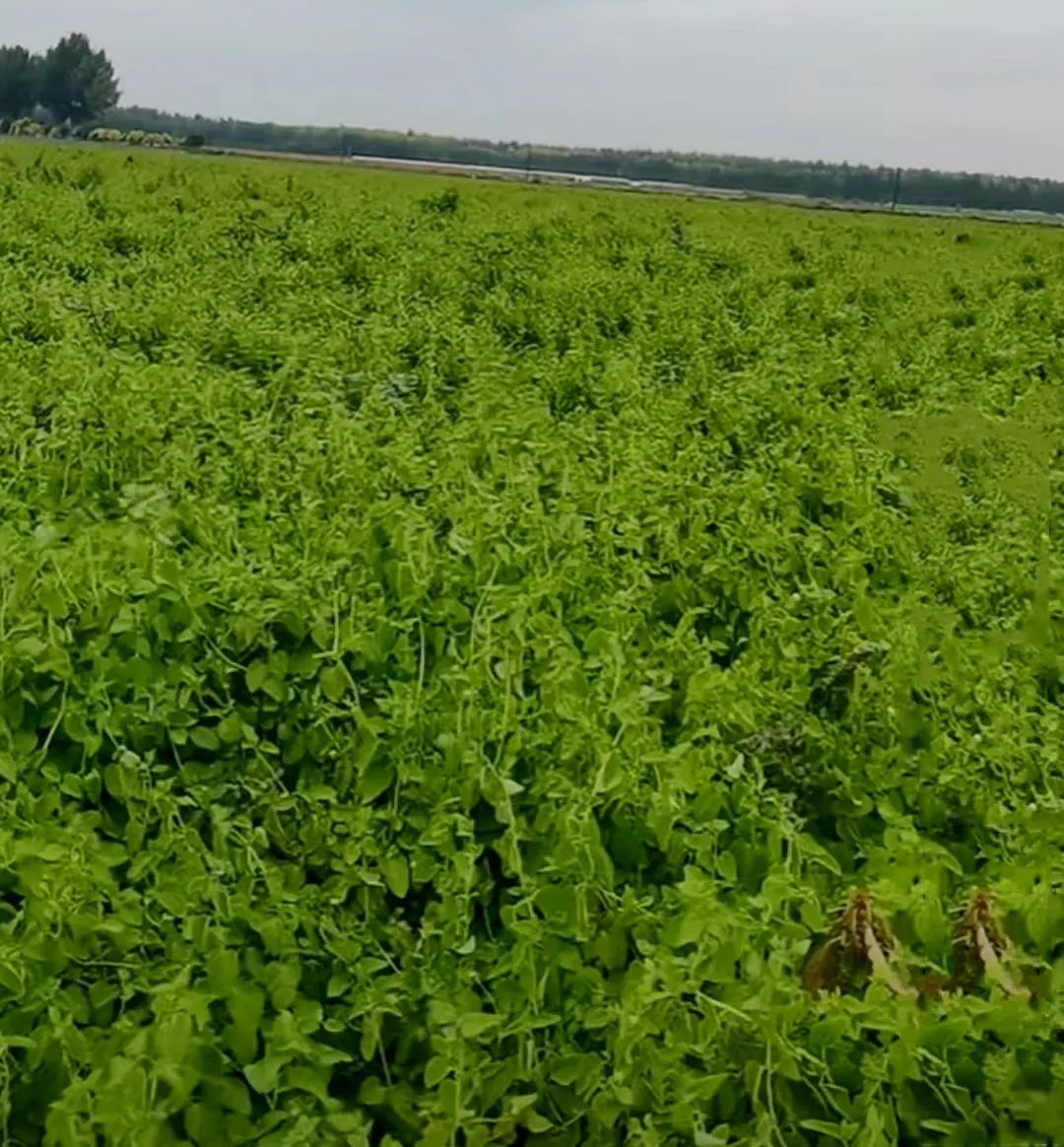
 Transplanting of Dang Shen can be done in spring or autumn. Spring transplanting occurs before the buds begin to sprout, typically from late March to early April; autumn transplanting is done in mid to late October when the stems and leaves have withered and growth has stopped. Spring transplanting should be done early, while autumn transplanting should be done later, with autumn transplanting being preferable. It is best to transplant on cloudy days or in the early morning or evening, transplanting immediately after digging up the seedlings.
Transplanting of Dang Shen can be done in spring or autumn. Spring transplanting occurs before the buds begin to sprout, typically from late March to early April; autumn transplanting is done in mid to late October when the stems and leaves have withered and growth has stopped. Spring transplanting should be done early, while autumn transplanting should be done later, with autumn transplanting being preferable. It is best to transplant on cloudy days or in the early morning or evening, transplanting immediately after digging up the seedlings.
Seedlings can be harvested one year after planting, taking care to dig from the side to avoid damaging the seedlings, digging and picking simultaneously, while removing any diseased or damaged seedlings. It is best to classify the seedlings into large, medium, and small sizes for separate planting. Harvesting should not be done on rainy days. After harvesting autumn transplants, they should be planted immediately. The best seedlings are those that are long and thin (short and thick seedlings have poor regeneration ability and low yield), classified by size. During transplanting, avoid damaging the root system, placing the seedlings at an angle in the furrow, raising the root tips slightly, and covering the roots with soil so that the root tips are not exposed, generally about 5 cm above the root tips. The row spacing should be 20-30 cm, and the plant spacing should be 5-10 cm. Planting at an angle is preferable, as this method yields higher quality and quantity of Dang Shen.
 The main diseases affecting Dang Shen include root rot, rust, and downy mildew. For these diseases, the following measures are commonly used in the production of vegetables, fruits, and tea to control and reduce damage:
The main diseases affecting Dang Shen include root rot, rust, and downy mildew. For these diseases, the following measures are commonly used in the production of vegetables, fruits, and tea to control and reduce damage:
(1) Root Rot
① Pathogen and Symptoms: Caused by fungi in the class of imperfect fungi, order of Helminthosporium, and genus Fusarium. The affected parts of the Dang Shen plant are primarily the roots, starting from the fibrous and lateral roots, which turn yellow-brown and rot, later spreading to the main root. Initially, water-soaked reddish-brown spots appear, which later expand and merge, causing the roots to turn black-brown and rot, while the above-ground parts gradually wilt and yellow. Sometimes, diseased roots produce callus tissue and regenerate new roots, leading to uneven root surfaces and reduced quality. The pathogen overwinters in the soil and spreads through contaminated soil. Continuous cropping, high temperatures, heavy rainfall, high humidity, low-lying terrain, heavy clay soil, drought followed by heavy rain, poor drainage, and severe underground pest damage often lead to disease outbreaks, typically starting in mid to late May.
② Control Methods ★Agricultural Control: Before sowing, wash Dang Shen seeds with clean water to remove unripe and underdeveloped seeds. Cultivate and select healthy seedlings free from disease. During the rainy season, regularly clear ditches to reduce field humidity. Provide support in the field to avoid dense vine coverage, which facilitates ventilation and light. Timely clean the field to remove residual plants to reduce overwintering pathogens. Implement a 3-year crop rotation with cereal crops. Use disease-free seeds. Timely remove diseased plants and burn them, and apply quicklime to disinfect the affected areas.
★Biological Control: Start applying a solution of 10 billion spores/g of Bacillus subtilis at a dilution of 500 times before the onset of the disease, irrigating every 7 days for at least 3 times.
★Chemical Control: Treat the seedbed with a mixture of 30% carbendazim and 10% tebuconazole at a dilution of 1000 times before sowing. Before planting, soak the seedlings in a plant resistance inducer, chitosan (5% amino-oligosaccharide) at a dilution of 800 times and 10% tebuconazole at a dilution of 1000 times for 20 minutes, then plant after drying slightly. At the initial stage of the disease, use 80% manganese-zinc complex wettable powder at a dilution of 1000 times, or a mixture of 30% carbendazim and tebuconazole at a dilution of 1000 times for spraying or root irrigation, every 7-10 days for at least 3 times. It is recommended to use the above chemical agents in combination with the plant resistance inducer chitosan (5% amino-oligosaccharide) or 6% 24-epibrassinolide at a dilution of 1000 times for improved quality, efficiency, disease resistance, and root strengthening.
(2) Rust
① Pathogen and Symptoms: Belongs to the class of basidiomycetes, order of rust fungi, and genus Puccinia. Primarily harms the leaves, but can also affect flower receptacles and stems. Initially, yellow-brown spots appear on the leaf surface without clear edges. Corresponding small reddish-brown pustules appear on the underside, hidden beneath the epidermis, which later rupture, exposing orange-yellow summer spore masses, often located on both sides of the leaf veins. In severe cases, the leaves may dry out, and winter spore masses may form. The pathogen survives on branches and leaves during winter and spreads through air currents, with peak incidence occurring in June-July. Optimal temperatures for disease development are 23-26°C, with high humidity from wind, rain, and heavy dew favoring outbreaks.
② Control Methods ★Agricultural Control: Timely remove and burn diseased plants, and disinfect the affected areas with lime. Clean the field after harvest to eliminate overwintering pathogens. Dang Shen medicinal herb bases should be located away from cypress trees (forests) to avoid sources of infection.
★Biological Control: Before the onset of the disease, spray with a solution of 2% agricultural antibiotic 120 (pyrimidine nucleoside antibiotic) or 1% Wuyi mycin at a dilution of 150 times, spraying every 7-10 days as needed based on disease severity. ★Chemical Control: Before or at the initial stage of the disease, use a suspension of 42% oligosaccharide-sulfur at a dilution of 600 times, or 80% manganese-zinc complex wettable powder at a dilution of 1000 times, or 30% tebuconazole wettable powder at a dilution of 3000 times for protective spraying. After the onset of the disease or at the initial stage, use a suspension of 25% pyraclostrobin at a dilution of 2000 times, or other triazole fungicides (20% tebuconazole or 25% propiconazole at a dilution of 1000 times) for spraying control.
(3) Downy Mildew
① Pathogen and Symptoms: Belongs to the class of oomycetes, order of downy mildew fungi. Primarily affects the leaves. Initially, yellow-green spots appear on the leaves, with indistinct edges, which later expand, and corresponding purple-brown downy layers appear on the underside of the leaves. The lesions on the upper side of the leaves expand, limited by the leaf veins, forming irregular shapes. In severe cases, the leaves turn brown and die.
② Control Methods ★Agricultural Control: Clean the field after harvest to reduce pathogen sources. Manage fertilization and irrigation appropriately, increase the application of well-rotted organic fertilizer, and use balanced fertilization with micronutrients. Promote the use of biological fertilizers and organic fertilizers to cultivate robust plants and enhance disease resistance. Implement crop rotation and reasonable planting density.
★Chemical Control: Before the onset of the disease, protective fungicides such as 80% manganese-zinc complex or 30% tebuconazole or 23% oligosaccharide-tebuconazole at a dilution of 1000 times can be used for preventive spraying to control occurrence and spread. After the onset of the disease or at the initial stage, timely use 72% chlorothalonil (chlorothalonil + manganese-zinc) wettable powder or 52.5% azoxystrobin (azoxystrobin + chlorothalonil) wettable powder or 72.2% downy mildew hydrochloride at a dilution of 1000 times for spraying control. It is recommended to mix with plant resistance inducers such as chitosan (5% amino-oligosaccharide) or 6% 24-epibrassinolide at a dilution of 1000 times for enhanced resistance and quality improvement. Alternate the use of fungicides based on disease conditions, generally spraying about 2 times with intervals of 7-10 days.
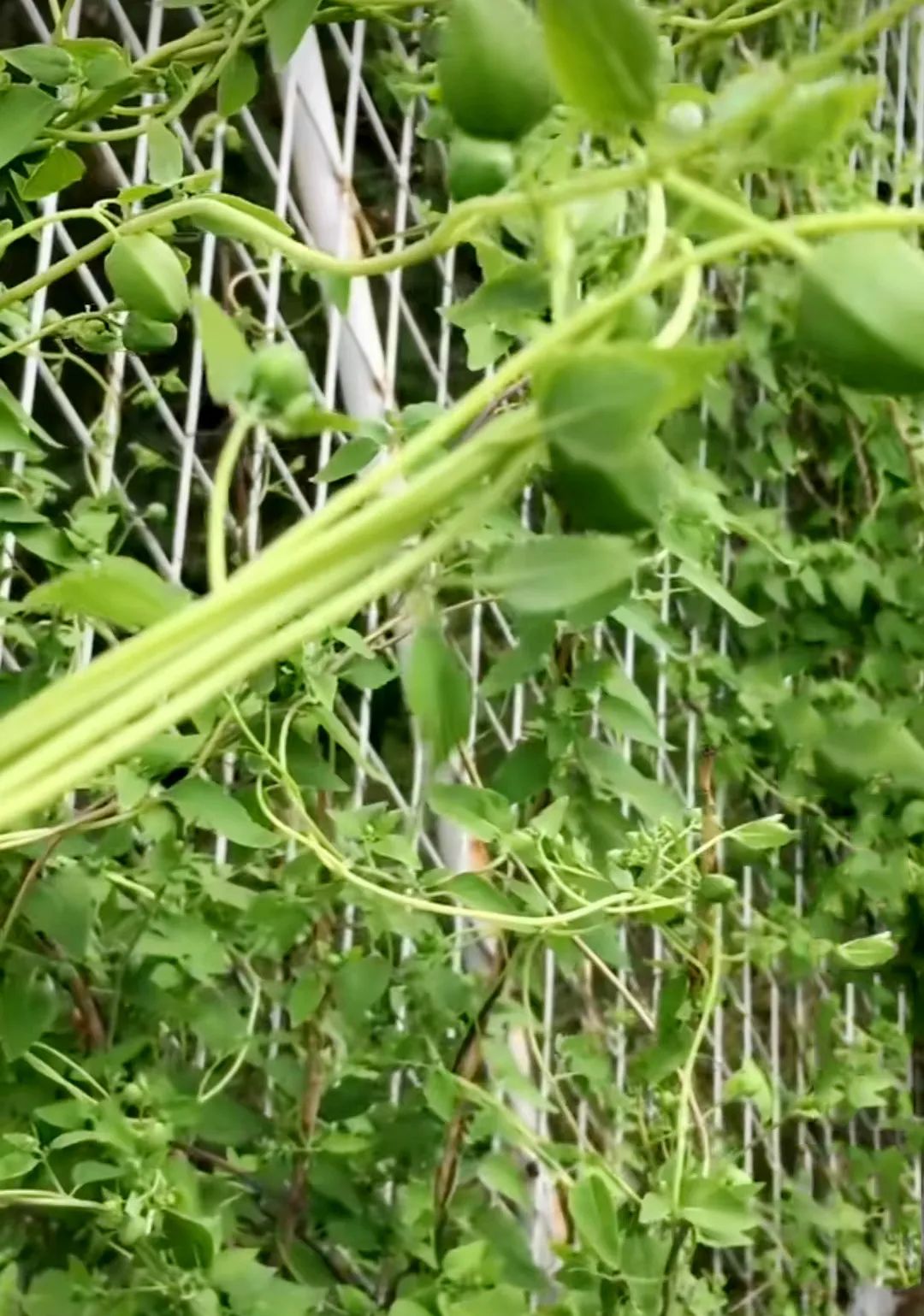
The main pests affecting Dang Shen include aphids, grubs, and cutworms. For these pests, the following measures are commonly used in the production of vegetables, fruits, and tea to control and reduce damage:
(1) Aphids
Belong to the order Hemiptera, family Aphididae. ① Damage Symptoms: Aphids often cluster on the leaves, tender stems, flower buds, and terminal buds of Dang Shen, using their piercing-sucking mouthparts to extract nutrients from the plant, causing deformed growth, leaf curling, and dropping, and can even lead to wilting and death of the medicinal plant.
② Control Methods
★Agricultural Control: Eliminate overwintering sources of pests, clear nearby weeds, and thoroughly clean the field.
★Physical Control: During the initial outbreak of winged aphids, implement large-scale use of yellow sticky traps to delay the outbreak and reduce severity; in light outbreak years, chemical control may not be necessary. Commercial yellow traps can be used, with 30-40 traps per mu.
★Biological Control: When aphid populations are low, protect and utilize natural enemies such as ladybugs for natural control; after the occurrence of wingless aphids, treat early with biological insecticides such as 0.5% quassia amara or 5% pyrethrin emulsifiable concentrate at a dilution of 1000 times.
★Chemical Control: After the occurrence of wingless aphids, treat promptly before they spread, prioritizing the use of 25% thiamethoxam wettable powder or 10% pyriproxyfen emulsifiable concentrate at a dilution of 2000 times, or 5% spinosad at a dilution of 2000 times for even spraying, maximizing the protection of natural enemies and beneficial insects. Other agents can include 10% acetamiprid soluble powder at a dilution of 2000 times, or 92.5% chlorantraniliprole dispersible liquid at a dilution of 15000 times for spraying control.
(2) Grubs
Belong to the order Coleoptera, family Scarabaeidae. ① Damage Symptoms: Grubs feed on the roots of Dang Shen about 1-2 inches below the soil surface, creating holes or severing roots, leading to missing seedlings and even crop loss. ② Control Methods ★Agricultural Control: Deep plow and harrow the fields before winter to kill overwintering pests and reduce the base population of larvae. Apply well-rotted organic fertilizer to prevent attracting adults to lay eggs. When grubs are found damaging the plants, dig out the larvae near the roots of the affected plants for manual removal.
★Physical Control: Utilize the phototropic behavior of adult beetles by installing light traps for large-scale trapping. Generally, one trap is installed for every 50 acres.
★Biological Control: Use a suspension of 90 billion spores/g of Beauveria bassiana at a dilution of 400 times for root irrigation during the early larval stage.
★Chemical Control: Timely treatment upon discovering damage symptoms can include using 50% chlorpyrifos emulsifiable concentrate at a dilution of 800 times for root irrigation. For bait control, prepare a bait with 10% emamectin benzoate dispersible oil suspension at a ratio of 1:200 with bait material, mix thoroughly, and spread in the field in the evening to attract and kill larvae. For liquid irrigation control during the larval stage, use 50% chlorpyrifos emulsifiable concentrate or 5% chlorantraniliprole suspension at a dilution of 1000 times, or 10% emamectin benzoate dispersible oil suspension at a dilution of 2000 times for root irrigation.
(3) Cutworms
Belong to the order Lepidoptera, family Noctuidae. ① Damage Symptoms: The larvae feed on and sever tender stems, with younger larvae (1st and 2nd instars) feeding on the tender leaves of Dang Shen seedlings, while older larvae (3rd instar and beyond) hide in the soil during the day and emerge at night to cause damage, often severing the seedlings at the soil surface, leading to missing seedlings and affecting the transplanting of Dang Shen in the field. The larvae often hide just below the surface of the soil near damaged plants. Adults are attracted to nectar and are strongly phototropic.
② Control Methods ★Agricultural Control: In suitable areas, implement crop rotation between wet and dry seasons to effectively eliminate cutworm damage. Weeds are breeding grounds for cutworms, so regularly removing weeds significantly reduces pest occurrence, especially during the egg-laying period of adults. Use manual or mechanical tillage to reduce cutworm larvae and eliminate next year’s pest sources. Proper tillage can disrupt the hatching and emergence conditions for cutworms, preventing their reproduction.
★Physical Control: Utilize the phototropic behavior of cutworm adults by installing insecticidal lamps to trap adults, eliminating them before they lay eggs, with one lamp installed for every 50 acres. Prepare a sugar-vinegar solution in the ratio of 33:1:10 for trapping cutworm adults, placing traps on stands 30 cm above the seedlings, checking for dead moths every morning, covering the traps at night, and changing the solution every 5-7 days for 20-30 days.
★Chemical Control: During spring tillage, use 50% chlorpyrifos emulsifiable concentrate at 1 kg mixed with 30 kg of fine soil to create toxic soil, evenly spread over 1 mu of tilled land to kill overwintering cutworm larvae. At sowing, dilute 50% chlorpyrifos emulsifiable concentrate at 1 kg with an appropriate amount of water, spray on 50 kg of fine soil, mix thoroughly to create toxic soil for application in the holes (furrows) to prevent cutworms from feeding on the young Dang Shen seedlings; after emergence, apply toxic soil around the seedlings to kill cutworm larvae that emerge at night; or mix 50% chlorpyrifos emulsifiable concentrate at 0.5 kg with 1.5 kg of water and 100 kg of chopped vegetable leaves or weeds to create toxic bait for evening application around the plants. In the seedling bed, spray with plant resistance inducers such as chitosan (5% amino-oligosaccharide) at a dilution of 800 times combined with 50% chlorpyrifos emulsifiable concentrate at a dilution of 1000 times or 5% spinosad or 2.5% mancozeb suspension at a dilution of 1500 times for safe pest control.


The optimal harvest period for Dang Shen is 3-4 years, meaning harvesting can occur 2-3 years after transplanting. Autumn is the preferred season for harvesting, as the medicinal material is fully mature, with a high dry weight and good quality. Harvesting should be done on sunny days, first removing the supports and cutting off the vines, then digging a 30 cm deep trench on one side of the bed, carefully excavating the roots. Fresh roots are brittle, easy to break, and should be handled carefully to avoid damaging the roots, as this can cause the sap to leak out, affecting root quality.


